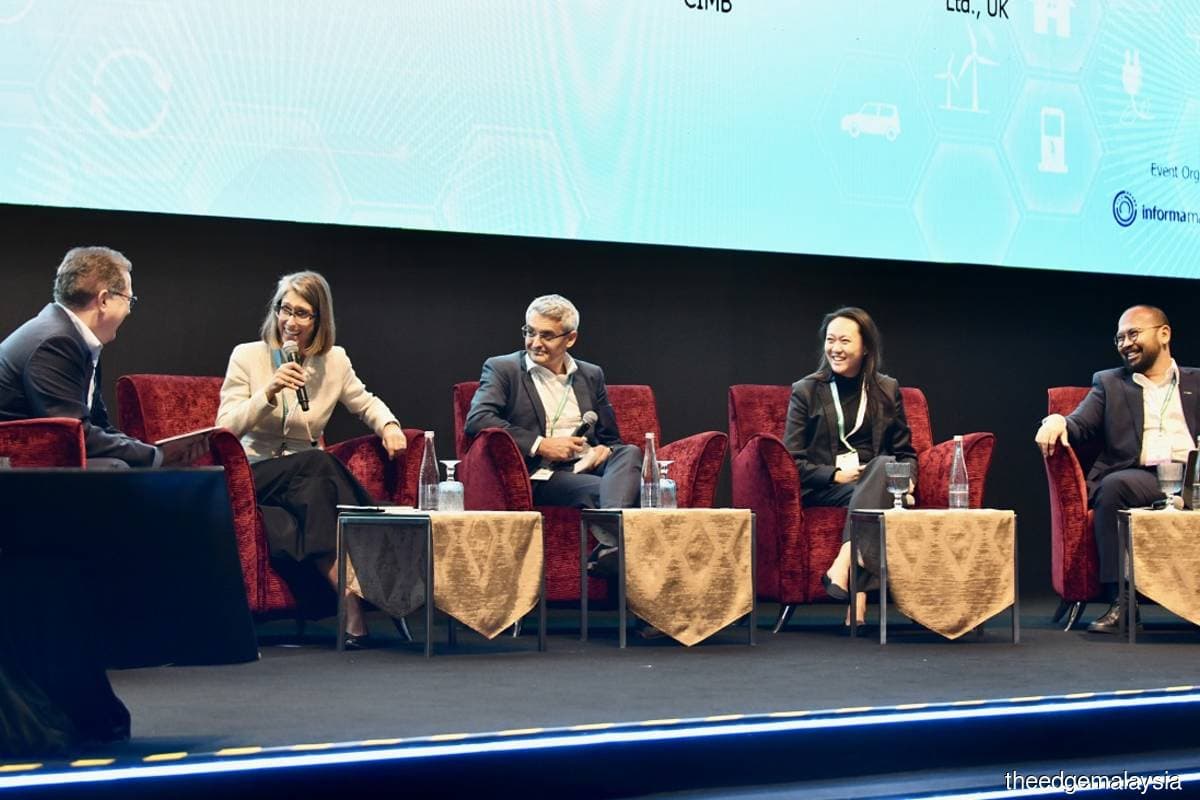
KUALA LUMPUR (Aug 28): The renewable energy (RE) sector is not getting enough financial support from banks, despite abundant business opportunities and Malaysia’s target to have a 70% RE energy mix by 2050, the Energy Transition Conference heard on Monday (Aug 28).
Uzma Bhd chief executive officer Datuk Kamarul Redzuan Muhamed said that while there are many green-related financing options available, it is difficult to tap the facilities, especially for companies that are in the oil and gas (O&G) industry.
“There are a lot of programmes that are available out there, but the actual fact is that it’s very hard to reach these facilities.
“The yardstick of awarding these bonds or green financing and whatnot, is still using the same yardstick of looking at the internal rate of return (IRR) and I think we’re going to have the same problem,” he said during a panel discussion on “transforming brown assets into green assets” at the conference.
“At the same time, we also have that single customer limit, because at the end of the day, in Malaysia, we only have one off-taker for RE,” added Kamarul, referring to Tenaga Nasional Bhd’s role as the sole off-taker, which according to him, creates an unfavorable situation in the development of the RE market.
He pointed out that companies in the O&G sector that have transition plans also face funding difficulties, as their current core business is not being funded, hence making it difficult for them to fund their transition journey.
“I feel that financial distribution needs to also fund what are called ‘brown assets’, because green assets and green businesses are very hard businesses. You need to go out and raise debt, and to raise that, you still need to have your equity portion funded. And that equity portion has to be funded by your current core business.
“For a lot of companies that want to transition, they cannot find the funding because the existing business has not been funded,” Kamarul said.
Uzma is one of the local O&G companies that is diversifying into solar projects, which it bagged under the Large Scale Solar 4 (LSS4) programme. It is developing a solar photovoltaic facility of 50MW (megawatt) capacity.
Kamarul said that while RE is a low risk-low return investment, the question is how long would the low risk-return take, because as a company, it needs to strike a balance in its investment.
“There should be some level of protection, because solar panel prices have been volatile for the past years,” he added.
Meanwhile, CIMB Group chief sustainability officer Luanne Sieh said banks are already offering “transition finance” for companies, but the rules are pretty strict because many companies are using “transition” as a “nice name”.
“A lot of companies are saying they are on a transition journey and put it on their website, but are they really transitioning? That is the challenge the banks are facing.
“So to attract transitioning finance, companies need to make sure they have clear goals at the mid- to long term, from 2030 to 2040 to 2050. Make sure you have technology pathways and roadmaps and make sure you have clear metrics. Lastly, make sure you have a clear carbon offset and only as a last resort, because the financial sector wants to see the real transition,” she said during the panel discussion.
Read also:
Energy transition must be inclusive, needs joint commitment of stakeholders — TNB chairman
Nik Nazmi: Developed nations bear responsibility for aiding developing counterparts in energy transition
Malaysia to launch hydrogen roadmap this year as it seeks hydrogen investments
As RE inequality persists, critical materials supply constraint looms ahead — Irena DG
Phase two of NETR to focus on biomass, waste-to-energy, carbon capture
Malaysia’s fuel subsidy holding back EV adoption, says Gentari deputy CEO
EV adoption in Malaysia outpacing charger deployment, says Gentari deputy CEO
Gas pricing model key for sustainable power generation in Malaysia's energy transition, says MGA chief
